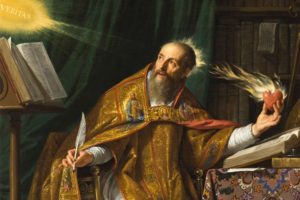When I was in seminary, Professor Rick Lints made a memorable statement. After lecturing on the Reformation’s conception of salvation, he asserted that “This generation of Christian leaders must carry sola scriptura and sola fide (Scripture alone and faith alone) in their hearts, and, while doing so, work out a coherent doctrine of the Church.” Or, in the words of another Gordon-Conwell professor, Greg Beale, “We must provide an answer for the ecclesial hope within us.”
Among the most helpful volumes on this topic is by the late Catholic theologian, Avery Cardinal Dulles. In his book, Models of the Church (see the 2002, Expanded Edition), Dulles gives an overview of the five primary models: (1) Institution, (2) Mystical Communion, (3) Sacrament, (4) Herald, and (5) Servant. He showcases the strengths and weaknesses of each and concludes by integrating their contributions. Following is an overview of each model with a few concluding thoughts.
Church As Institution
The institutional view “defines the Church primarily in terms of its visible structures, especially the rights and powers of its officers” (27). It is a hierarchical form of Church government, which the Jesuit, Robert Bellarmine (1542-1621), described as a society “as visible and palpable as the community of the Roman people, or the Kingdom of France, or the Republic of Venice” (26). Thus, authority is vested in the ruling class –clerics and church officers – whose jurisdiction is patterned after the secular state. As agents of God’s sacraments, the priesthood opens and shuts the valves of divine grace. Because the institutional model maintains that its hierarchical structure belongs to the apostolic deposit passed down by Christ’s disciples, the authority of the ruling class is regarded as God-given, and should therefore be unquestionably accepted by the faithful.
The strength of the Institutional model is in its public, visible manifestation of solidarity. It presents a tangible communion of faith. Unlike the other models, all tests of membership are visible and demonstrable. The weaknesses of this model, however, are also significant. On its own, it may become “rigid, doctrinaire, and conformist; it could easily substitute the official Church for God, and this would be a form of idolatry (186). Dulles goes on to explain that this is the only model that must not be paramount. He writes, “One of the five models, I believe, cannot properly be taken as primary—and this is the institutional model. Of their very nature, I believe, institutions are subordinate to persons, structures are subordinate to life” (189).
Church As Mystical Communion
According to this perspective, the church consists of faithful men and women who are bound together by their participation in God’s Spirit through the living Christ. The nature of this unity is not institutional but pneumatological (by the Spirit), communal, and personal. “The goal of the Church, in this second ecclesiological type, is a spiritual or supernatural one. The Church aims to lead men into communion with the divine” (50). “The Church, from this point of view, is not in the first instance an institution or a visibly organized society. Rather it is a communion of men, primarily interior but also expressed by external bonds of creed, worship, and ecclesiastical fellowship” (47-48). The bond of unity, in this model, consists of the gifts of the Holy Spirit, though the external bonds are recognized as important in a subsidiary way.
The strength of the Church as Mystical Communion is its emphasis on the dynamic community generated by the Holy Spirit along a vertical line (relationship with God) and horizontally (relationship with brothers and sisters). The potential downside of this model is the danger of it degenerating into mere Christian fellowship without objective theological content. Accordingly, Dulles writes, the communion “may exalt and divinize the Church beyond its due” (52). It may also “fail to give Christians a clear sense of their identity and mission” (52).
Church As Sacrament
In a sense, this model seeks to bring the previous two (Institutional and Mystical Communion) closer together, retaining structure while also promoting dynamic spiritual life. It is predicated on the notion that the structure of human life is symbolic. “The body with all its movements and gestures becomes the expression of the human spirit. The spirit comes to be what it is in and through the body” (57). Accordingly, the Church as sacrament is a sign and transmitter of God’s grace in the world. As an embodiment of the grace that it signifies, the Church exists as the presence of God to the nations.
Another important element of this model highlights and affirms that the sacraments are a communal reality and not an individual transaction:
As understood in the Christian tradition, sacraments are never merely individual transactions. Nobody baptizes, absolves, or anoints himself, and it is anomalous for the Eucharist to be celebrated in solitude. Here again, the order of grace corresponds to the order of nature. Man comes into the world as a member of a family, a race, a people. He comes to maturity through encounters with his fellow men. Sacraments therefore have a dialogic structure. They take place in a mutual interaction that permits the people together to achieve a spiritual breakthrough that they could not achieve in isolation. A sacrament therefore is a socially constituted or communal symbol of the presence of grace coming to fulfillment. (59)
The strength of this model is that the church truly is a sign and instrument of grace to its members and the world while seeking to hold in tension the outer (organizational/institutional) and inner (mystical communion) aspects of the Church. Dulles indicates that its weakness is that it has little warrant in Scripture and the early tradition of the Church (66) and that it “could lead to a sterile aestheticism and an almost narcissistic self-contemplation” (186). This model has found relatively little acceptance among Protestant churches (notwithstanding the Anglo-Catholic or some High-Lutheran traditions).
Church As Herald
If the previous model is least common among Protestants, this one is probably the most widely accepted. The herald model “differs from the preceding because it makes the ‘word’ primary and the ‘sacrament’ secondary. It sees the Church as gathered and formed by the word of God. The mission of the Church is to proclaim that which it has heard, believed, and been commissioned to proclaim” (68). “This model is kerygmatic, for it looks upon the Church as a herald – one who receives an official message with the commission to pass it on. The basic image is that of the herald of the king who comes to proclaim a royal decree in a public square” (68-69). At the center of the heralding church is the activity of calling its members to renewal and reformation.
The strength of this model is its emphasis on the message of the gospel and the pursuit of the Great Commission. It can be limited, however, in that it is often devoid of incarnational service. This truncation, in its most acute form, can appear docetic—merely ideas without tangible reality. This is especially obvious when “it focuses too exclusively on witness to the neglect of action. It is too pessimistic or quietistic concerning the possibilities of human effort to establish a better human society in this life, and the duty of Christians to take part in this common effort” (79).
Church As Servant
The servant model “asserts that the Church should consider itself as part of the total human family, sharing the same concerns as the rest of men” (84). Following in the footsteps of Jesus our Lord, the Suffering Servant, “[T]he Church announces the coming of the Kingdom not only in word, through preaching and proclamation, but more particularly in work, in her ministry of reconciliation, of binding up wounds, or suffering service, of healing…. And the Lord was the ‘man for others,’ so must the Church be ‘the community for others’”
In explicating the precise meaning of “Church as Servant,” Dulles notes, “The term “servant,” indeed, contains certain ambiguities. It connotes three things: work done not freely but under orders; work directed to the good of others rather than to the worker’s advantage; and work that is humble and demeaning (“servile”)” (91). The weakness of the Servant model is observed in the work of its theologically liberal adherents, men such as John A. T. Robinson and Harvey Cox, for example. These proponents of so-called “secular theology” have challenged us to think about the role of the church in the world, but, tragically, they have compromised the biblical deposit of faith which Christians are called to guard.
Integrating The Models
Each model offers insights and positive contributions to our understanding of the Church. When the most genuinely biblical qualities are preserved from each model and integrated, we realize a stronger ecclesial vision. This is what Dulles sets out to do in the latter half of his book:
Each of them [the five models] in my opinion brings out certain important and necessary points. The institutional model makes it clear that the Church must be a structured community and that it must remain the kind of community Christ instituted. Such a community would have to include a pastoral office equipped with authority to preside over the worship of the community as such to prescribe the limits of tolerable dissent, and to represent the community officially. The community model makes it evident that the Church must be united to God by grace and that in the strength of that grace, its members must be lovingly united to one another. The sacramental model brings home the idea that the Church must in its visible aspects – especially in its community prayer and worship – be a sign of the continuing vitality of the grace of Christ and of hope for the redemption that he promises. The kerygmatic model accentuates the necessity for the Church to continue to herald the gospel and to move men to put their faith in Jesus as Lord and Savior. The diaconal model points to the urgency of making the Church contribute to the transformation of the secular life of man, and of impregnating human society as a whole with the values of the Kingdom of God. (185-186)
If any model should emerge as the most comprehensive, Dulles recommends the sacramental model because of its ease in integrating all the best elements of the other four models.
For blending the values in the various models, the sacramental type of ecclesiology in my opinion has special merit. It preserves the value of the institutional elements because the official structures of the Church give it clear and visible outlines so that it can be a vivid sign. It preserves the community value, for if the Church were not a communion of love it could not be an authentic sign of Christ. It preserves the dimension of proclamation, because only by reliance on Christ and by bearing witness to him, whether the message is welcomed or rejected, can the Church effectively point to Christ as the bearer of God’s redemptive grace. This model, finally, preserves the dimension of worldly service, because without this the Church would not be a sign of Christ the servant. (189)
After reading the above quote, my thoughts returned to Professor Lints’ initial challenge for evangelical Protestants to cultivate a model of the church that is genuinely biblical while also catholic in scope, one that comprises the above-mentioned qualities—tangible, communal, sacramental, kerygmatic, and diaconal—as it keeps the message of the kingdom, embodied and proclaimed, at the leading edge.
Toward this end, may the Lord grant us wisdom and grace.
Photo by John Cafazza on Unsplash





